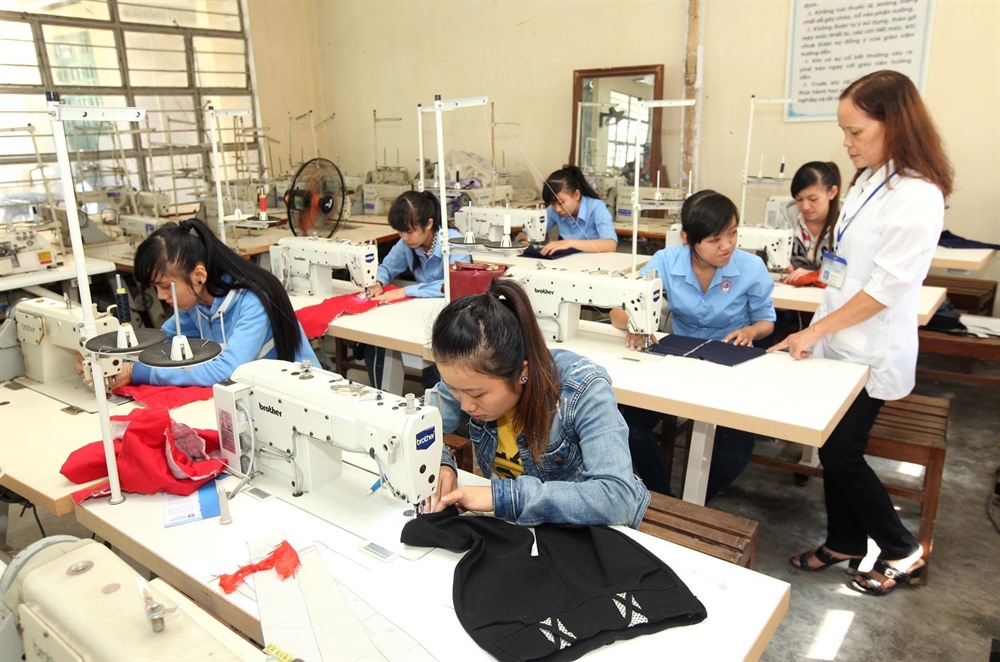 Society
Society

From the northern mountainous province of Yên Bái, in April 2018, Vi Thanh Thuỷ headed to Hà Nội, seeking life-changing opportunities.
 |
| Female trainees at a sewing class in Quảng Nam Vocational School. — VNA/VNS Photo Thanh Tùng |
HÀ NỘI — From the northern mountainous province of Yên Bái, in April 2018, Vi Thanh Thuỷ headed to Hà Nội, seeking life-changing opportunities.
“In my village, there is nothing much to do,” Thuỷ said, “So I left.”
An acquaintance told her about a non-profit organisation called REACH which has offered vocational training courses for disadvantaged young people for a decade. On hearing this, Thuỷ decided to take a chance.
It’s not just women from northern mountainous regions that find themselves excluded from the labour force, female workers in other rural areas face the same situation under the pressure of automated agriculture.
Considered the breadwinners of families when their husbands flee to cities to work in factories or on construction sites, rural women are under threat of losing their jobs on their paddy fields.
Meanwhile, vocational training for female labourers in general remains low.
Data from the General Statistics Office of Việt Nam shows that in 2016, among 54.4 million people aged over 15, only 20.9 per cent were skilled.
Moreover, the percentage of untrained female workers surpassed that of their male counterparts, 81.6 per cent compared to 76.7 per cent.
In 2010, the Government set a goal to raise the percentage of female workers under 45 receiving training courses to 25 per cent by 2015 and 50 per cent by 2020.
However, in reality, the process is behind schedule, as skilled female workers accounted for just 15 per cent of the labour force in 2016.
Geographic distance and remoteness limit ethnic minority women’s access to education and training opportunities, leaving them behind in the fight against poverty.
“Unskilled female workers from ethnic minorities are 0.36 times more common than those from the Kinh majority. They are more vulnerable and need more favourable policies to gain better access to education and employment opportunities,” said Trần Quý Long from the Institute for Family and Gender Studies.
Enterprises are unwilling to provide training, according to Vũ Xuân Hùng, head of the Directorate for Vocational Education and Training’s Formal Education Department.
Only 36.2 per cent of private firms and 30.2 per cent of public ones offer their employees courses to improve their skills.
The connection between professional vocational training schools and companies remains loose, leading to poor quality of graduates. The participation of non-profit organisations like REACH in offering training courses for vulnerable groups and connecting trainees with enterprises is of importance to improving the capacity and competitiveness of Vietnamese workers, especially women, in the labour market.
“Besides working skills, we have opportunities to expose potential candidates to working environments at different companies and get to know their qualities,” said Thuỷ.
Đặng Nguyên Anh, deputy head of the Việt Nam Academy of Social Sciences, pointed out that in Việt Nam, workers, in spite of being trained, cannot find jobs or fit in the working environment at companies.
He, therefore, stressed upon work-based vocational education to help workers catch up with emerging trends and changes in Industry 4.0.
Early last December, the Asian Development Bank (ADB) approved a US$78 million financial package to lift the quality of National Technical and Vocational Education and Training institutions, aiming to help the country’s labour force comply with rising market demands.
An additional fund of $3 million from the Japanese Government focuses on enhancing workers’ soft skills, including communication, teamwork and problem-solving as well as implementing demand-driving skills programmes for disadvantaged women and youth.
“With more than 60 per cent of the population under 35, Việt Nam has the potential to help deliver high and sustainable economic growth,” said Sakiko Tanaka, ADB Senior Social Sector Specialist.
“To help realise this potential, the project aims to help ensure Việt Nam’s labour force has the skills and knowledge necessary to increase their competitiveness and productivity for the global market,” she added. — VNS




